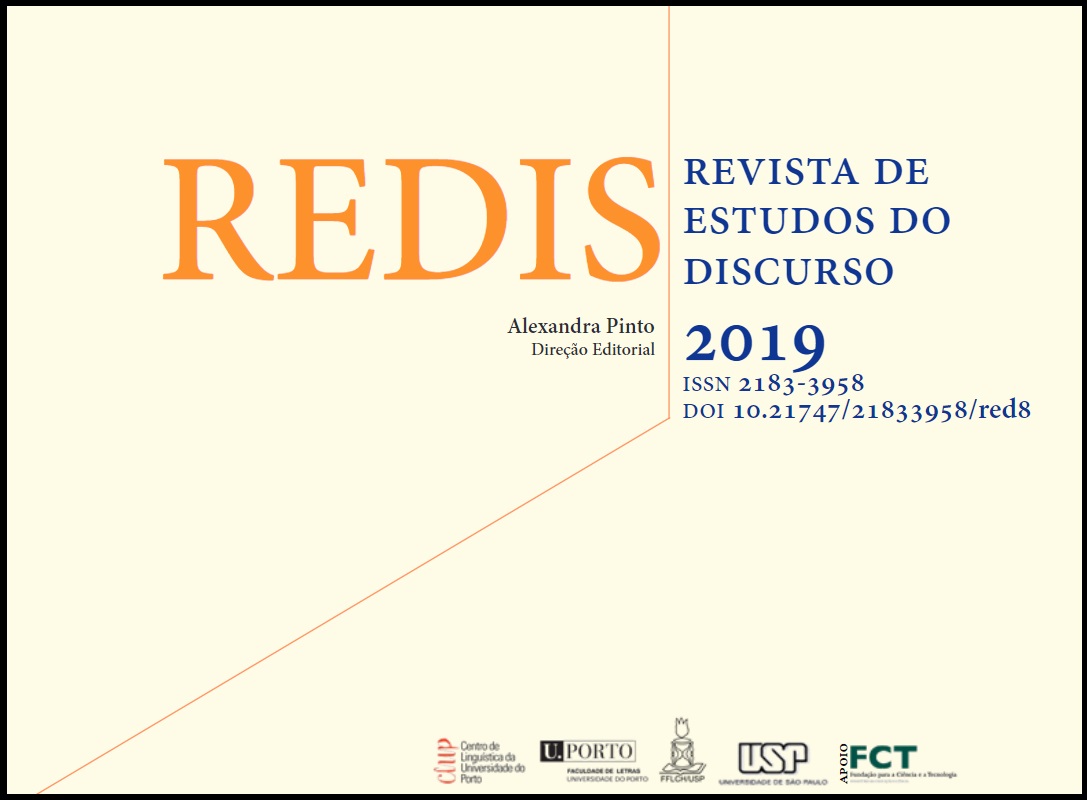Promoting youthfulness: the construction of persuasive discourse and argumentation
DOI:
https://doi.org/10.21747/21833958/red8a9Palavras-chave:
Argumentation, Advertising, Discourse, StereotypingResumo
Advertising discourse is persuasive by its very nature. Essentially goal-oriented, it is constructed so as to propose a pre-determined view of the world that suits its purposes, by means of a well-defined argumentative pathway that leads up to the proposed most (desired) suitable option. As a discourse that enjoys unparalleled freedom – both in terms of content and form – it has long moved beyond a clear-cut argumentative process based on hard sell versus soft sell, or tickle versus reason approaches (Cook, 2001:15). In their attempts to overcome boredom and scepticism on the part of an ad-literate audience, advertisers resort to different forms of argumentative reasoning: deduction, opposition, analogy or calculation, as proposed by Charaudeau (2008). In addition, as multi-modal texts, they make the most of the different modes available – pictures, text, sound, moving pictures – to build their argument. As claimed by Ripley (2008), an ad is an argument, thus, whichever claims or statements it makes, we are aware of – and suspicious about – its persuasive intent, though we often tend to go along with the worldviews it suggests. In spite of common accusations of stereotyping, segregating, imposing models of beauty, lifestyle among others, overlooking (and blurring) national idiosyncrasies, advertising has somehow managed to build rather convincing arguments that seemingly consider such criticism. In this study, we will look into cosmetics adverts that explicitly and implicitly build their arguments in ways that almost always encourage identical proposals of youthfulness, despite their apparent different claims and argumentative routes and despite their apparent concern for incorporating socially (or politically) correct positions.
Referências
Charaudeau, P. (2008). L’argumentation dans une problématique de l’influence. Revue Argumenta-tion et Analyse du Discours, (AAD) n°1, L’analyse du discours au prisme de l’argumentation. Accessed on 26/5/2018 at http://www.patrick-charaudeau.com/L-argumentation-dans-une.html.
Conradie, M. (2013). Signposting the inferencing route: a relevance theoretic analysis of intertextuality and metaphors in print advertisements. In Acta Academica, 45 (2), pp. 122-149. Accessed on 1/3/2018 at http://www.ufs.ac.za/ActaAcademica.
Cook, Guy (2001) (2nd ed.). The Discourse of Advertising. London and New York: Routledge.
Coupland, N. (2007). Language, Age and Ageism: A project for Applied Linguistics? International Journal of Applied Linguistics, pp. 26-47.
Fairclough, N. (1992) Discourse and Social Change. Cambridge: Polity Press.
Fairclough, N. (2001). Language and Power. New York: Routledge.
Kjeldsen, J. E. (2012). Pictorial Argumentation in Advertising: Visual Tropes and Figures as a Way of Creating Visual Argumentation. In F.H. van Eemeren and B. Garssen (eds.), Topical Themes in Argumentation Theory: Twenty Exploratory Studies, Argumentation Library, pp. 239-255.
Leech, G. (1966). English in Advertising: A Linguistic Study of Advertising in Great Britain, London: Longmans.
Myers, Greg (1998). Ad Worlds: Brands, Media Audiences. Bloomsbury Publishing PLC.
Ripley, M. L. (2008). Argumentation Theorists Argue that an Ad is an Argument, In Argumentation (2008) 22, pp. 507. Springer, Accessed on 3/4/208 at https://doi.org/10.1007/s10503-008-9102-2.
Ruiz Ruiz, J. (2014). El discurso implícito: aportaciones para un análisis sociológico. Revista Es-panola de Investigaciones Sociológicas, 146, pp. 171-190. Acedido em 3/4/2018 em http://dx.doi.org/10.5477/cis/rei.
Simões, E.; Tuna, S. (2015). Novas metodologias e abordagens em apelos publicitários: formas responsáveis de consumo na publicidade contemporânea”, Estudos em Comunicação n° 18, pp. 159-176.
Walton, D. (2009). Anticipating Objections in Argumentation, in (ed.9 Ribeiro, Henrique J. Rhetoric and Argumentation in the Beginning of the XXIst Century, ed Henrique Jales Ribeiro, Coimbra, pp. 87-109.
Williamson, J. (1978). Decoding Advertisements: Ideology and Meaning in Advertising. London and New York: Marion Boyars.
Downloads
Publicado
Como Citar
Edição
Secção
Licença
Direitos de Autor (c) 2020 Redis: Revista de Estudos do discurso

Este trabalho encontra-se publicado com a Licença Internacional Creative Commons Atribuição 4.0.
Os autores cedem à REDIS: Revista de Estudos do Discurso, o direito exclusivo de publicação dos seus textos, sob qualquer meio, incluindo a sua reprodução e venda em suporte papel ou digital, bem como a sua disponibilização em regime de livre acesso em bases de dados.




